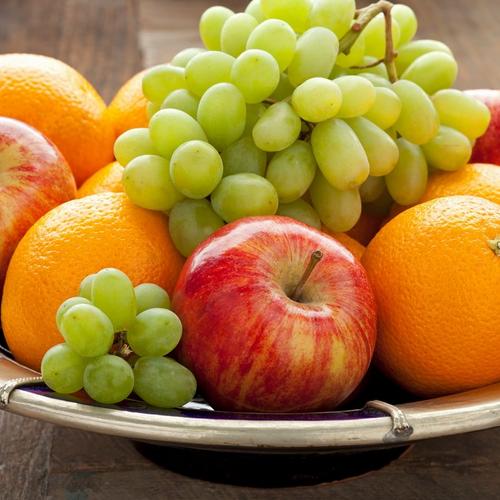Save 25% on all flower subscriptions - Shop here
Flower CareGuide
Learn how to keep your flowers fresh for longer
OUR TOP TIPS TO KEEPING CUT FLOWERS FRESH FOR LONGER
WHY DO CUT FLOWERS NEED CARE?
There are several things that happen when flowers are cut from the earth.
STEPS TO KEEPING CUT FLOWERS FRESH FOR LONGER
1. Find the perfect vase
Want to find out more? We’ve rounded up our top tips on the best vase to choose for your flowers.
It’s not every day you receive beautiful fresh flowers, so it’s important to wash your vase thoroughly. Carefully wash your vase with hot water and a small cap of dishwasher soap, together with a sponge. Allow the vase to dry naturally upside down rather than using a towel. This is the first step to ensuring no bacteria is present when water and flowers are introduced into the vase.
2. Condition your water
Once you had filled your vase, put it to one side and leave it for a while to allow some of the larger air bubbles to escape and for the water to reach room temperature. This helps the flowers to take water in more efficiently.
The final step is to add your flower food and give it a quick stir to make sure it has fully dissolved. Received a blooming big bunch? You might want to consider splitting the bouquet into smaller arrangements so not to overcrowd the vase. If so, you want to split your flower food amongst the vases to ensure it’s not too potent. As a rough guideline, the average sachet will contain the right dosage for 1 litre of water.
OLD WIVES TALES DEBUNKED
Adding a penny, vodka, aspirin or lemonade…these old wives tales often do more harm than good. Take lemonade for example; although it will provide the much-needed sugar cut flowers need for energy, it also contains a lot of bubbles which will clog stems very easily and this isn’t good. It’s best to stick with flower food if you want to ensure your flowers thrive!
HOW TO MAKE YOUR OWN FLOWER FOOD
If you misplaced your flower food sachet or want to give your flowers a top up after a few days, you can easily make your own at home. Just add 1 teaspoon of sugar, 1 teaspoon of bleach and 2 teaspoons of lemon juice, mixed with a quarter cup of warm water and voila! A spoonful of sugar really does help the medicine go down.
3. PREPARE YOUR FLOWERS
The final step of preparing your stems to is cut the stems to the right height, with the bottom of the stem cut at a 45 degree angle. Use sharp scissors, secateurs or even a knife to ensure a clean cut as this enables maximum water uptake.
4. Find a suitable location for your flowers
Some flowers such as lilies are also toxic to cats and dogs, so make sure you put your flowers out of reach of furry friends.
5. Check regularly
FLOWER CARE BY TYPE
ALSTROMERIA CARE TIPS



LILY CARE TIPS
Lilies bruise very easily so be careful when handling them. Use the stems as a handle an avoid handling the head of the stem with your hands. Lily pollen can also stain your skin, clothing and furniture so be careful when handling lilies once they bloom.



ROSE CARE TIPS
Like many stems, roses last much longer in a cool area and wilt quickly in direct sunlight or warmth. Keep your roses cool but not in a draught to make sure they are happy. Roses love a tall drink so keep on top of your water level making sure to change it when it becomes even slightly cloudy.
Looking to preserve your roses to make them last even longer? Roses are the perfect flower to dry. Whether you want to make your own wedding confetti, add fragrance to your home with homemade potpourri or just want to add a dried flower bunch to your dining room table, roses are the ideal choice. The easiest way to preserve roses is through air drying - either leave them in their vase until the petals have turned crisp, or hang them upside down when they’re in full bloom, and add a spritz of hairspray to prevent their petals from continuing to drop.



SUNFLOWER CARE TIPS
Sunflowers are one of the heaviest cut flowers and need a sturdy vase to support their top-heavy nature; a tall cylindrical vase that supports two-thirds of the stem is an ideal choice. Our top tip on how to keep sunflowers alive? Sunflowers are incredibly thirsty and will drink the contents of the vase very quickly, so make sure you keep a close eye on the water level and top this up regularly with fresh water.



TULIP CARE TIPS
Tulips grow a few inches after they are cut and will continue to grow throughout their vase life. To make sure they don’t topple or grow taller than their neighbouring blooms, cut the tulip stems more often.



FREESIA CARE TIPS
It is important to keep freesias out of direct sunlight, in a cooler temperature room with high humidity if possible. Freesia are also very sensitive to ethylene gas that is produced by many fruits and vegetables, so in order to keep them fresh, place them as far away as possible from the fruit bowl.



FREQUENTLY ASKED QUESTIONS
If you’ve been a lucky recipient of a fresh flower bouquet, you’ll want to make sure they stay fabulous for as long as possible. We guarantee our flowers stay fresh for 7 days, but our top three tips to make them last even longer? Cut your stems at an angle for maximum water uptake; keep your flower water fresh by replacing the water every few days, and; keep your fresh flowers out of direct sunlight or hot radiators.
If you’re wondering how much water to put in a vase, it will be dependent on the length of stems - we recommend water fills two-thirds of the vase. It’s important to add a sachet of flower food to your water when you first prepare your flowers. If you want to give your flowers a refresh every few days, you can make your own flower food using 1 tsp sugar, 1 tsp of bleach and 2 tsp of lemon juice - be careful not to just add sugar to the water as this can encourage the growth of bacteria which can make the flowers go mouldy.
Don’t worry if your flowers look a little sad on arrival, they just need some water to spruce them up. Received roses? It’s time to remove the guard petals - these are kept on to ensure the delicate roses don’t get damaged through the post. It’s then time to measure your flowers to the right height for them to stand in your chosen vase - remember not to cut them too shallow as you don’t want any leaves or flowers to sit below the waterline. Then its time to cut the stems, at a 45 degree angle to encourage water uptake.
All of our flower bouquets are guaranteed to stay fresh and fabulous for 7 days. To extend their vase life even more, it’s important to regularly refresh the water and remove any wilting leaves or flowers to ensure they keep spreading happiness for as long as possible.
We recommend changing flower water every couple of days, or more often in hot weather. If your water is looking a little cloudy, then it’s time to change it pronto - this may be from mouldy leaves below the waterline, so remove these before placing back in fresh water.
All of our flowers arrive in bud, meaning they are guaranteed to stay fresh for a week. If you’re looking for long-lasting flowers to keep the occasion rolling on, consider chrysanthemums or alstroemeria which have a vase life of 2-3 weeks. Lilies are also a popular choice, as their petals open up to full bloom after 3-5 days (temperature depending), meaning they stay fabulous for up to 2 weeks. Sunflowers are the perfect way to add sunshine to someone’s home, so you want to make sure they hang around for as long as possible. They are one of the few cut flowers which continue to grow when placed in a vase, so consider retrimming their stems when you refresh the water.
